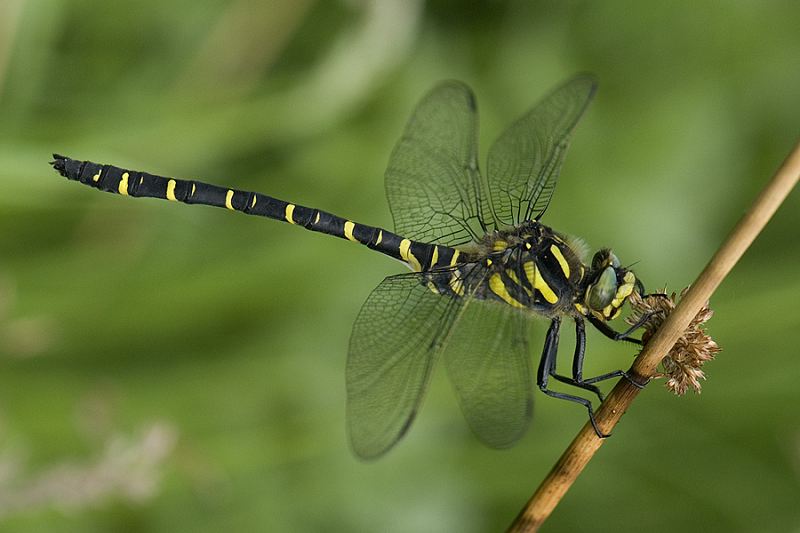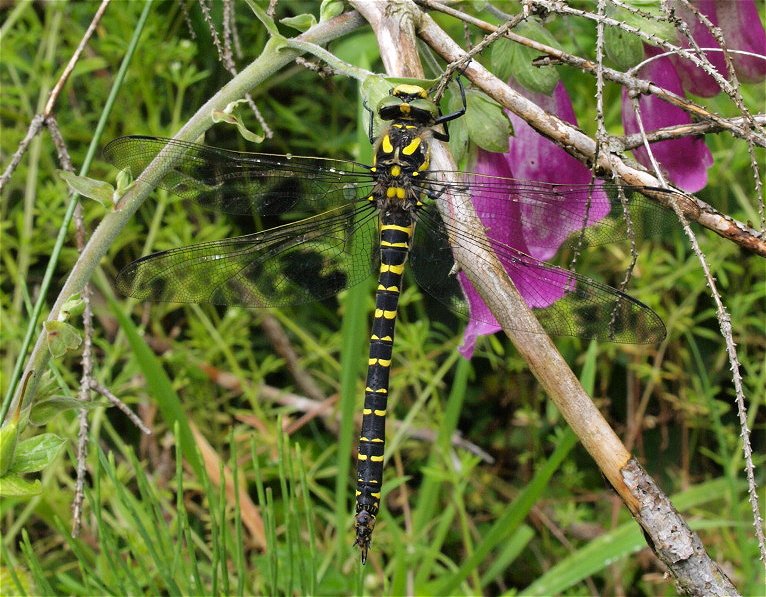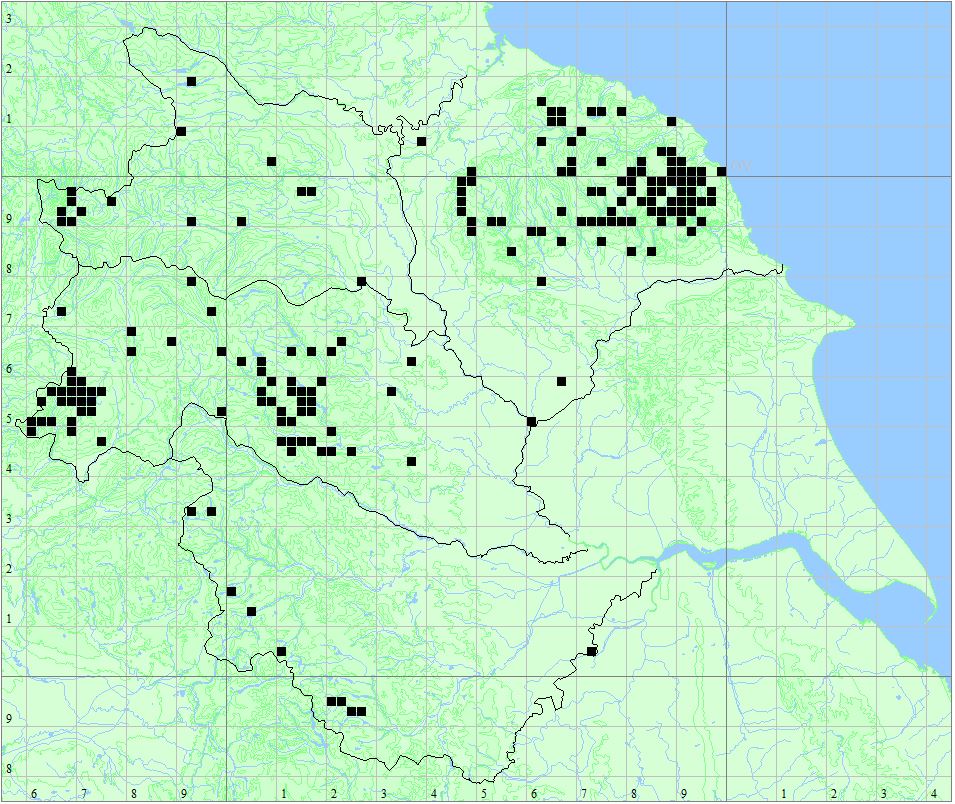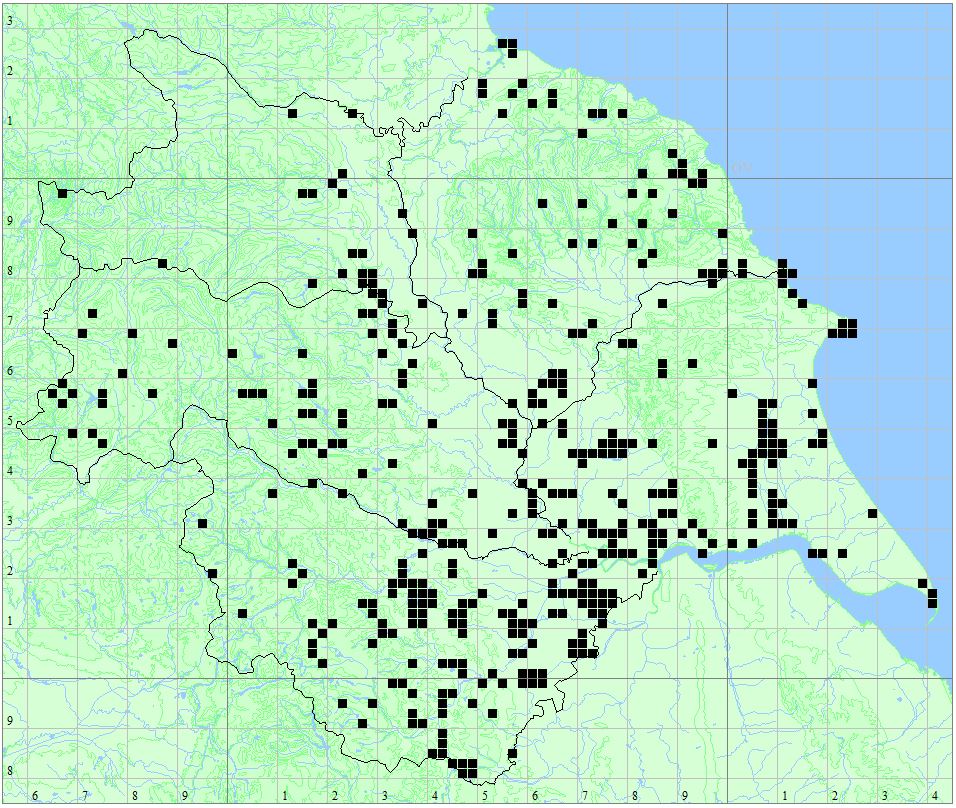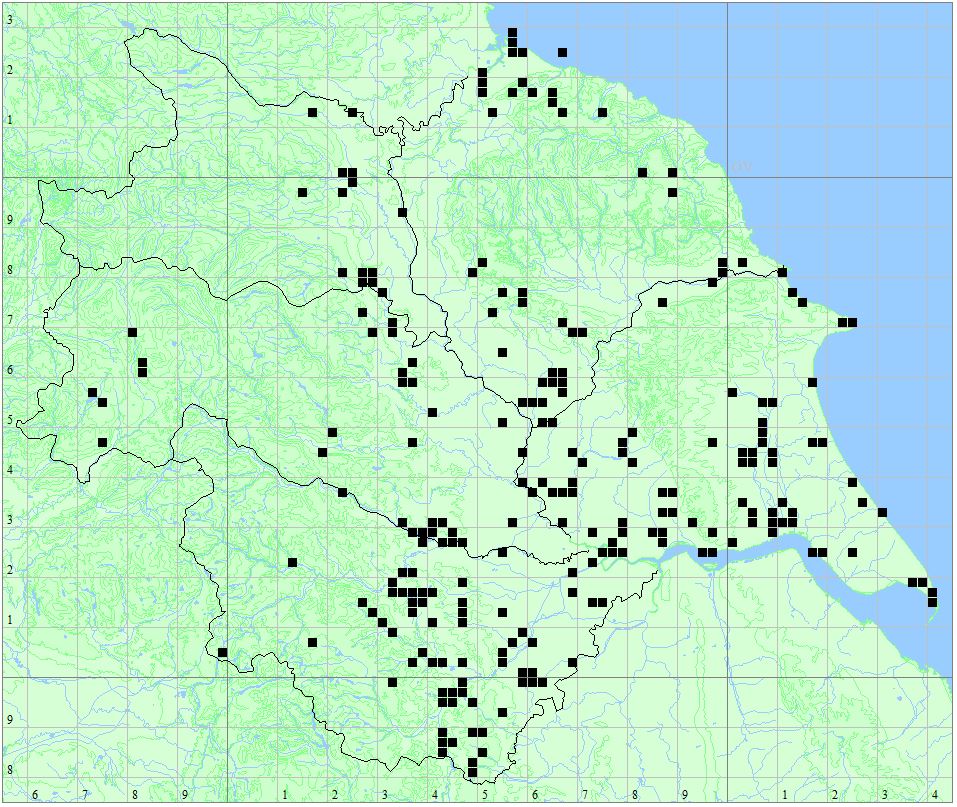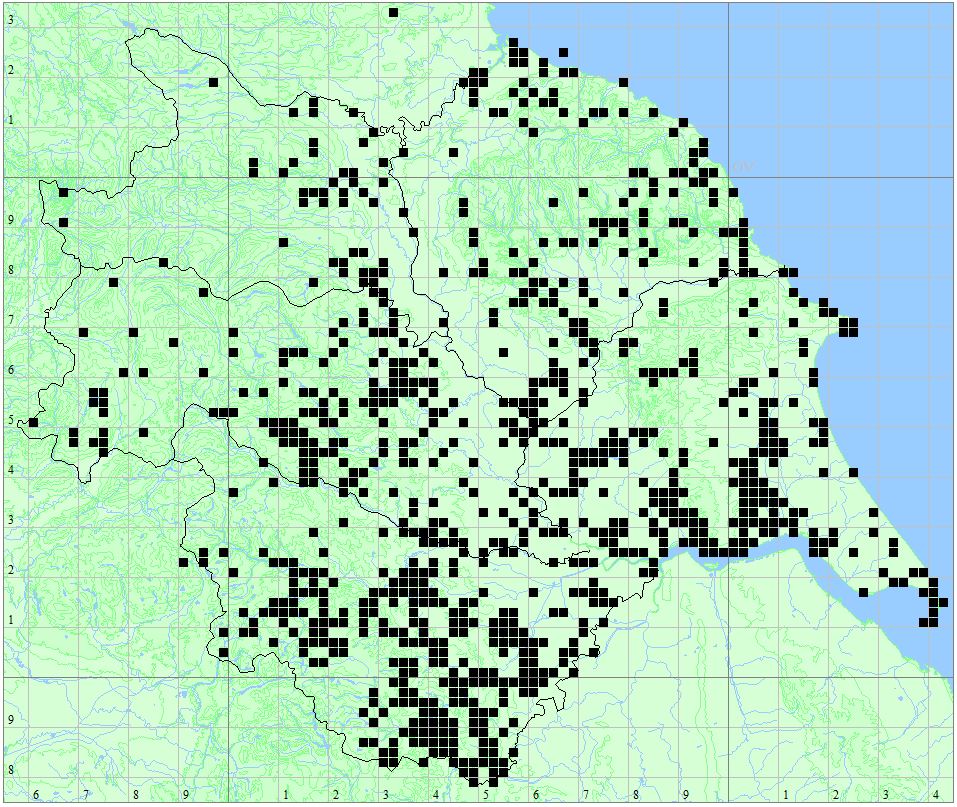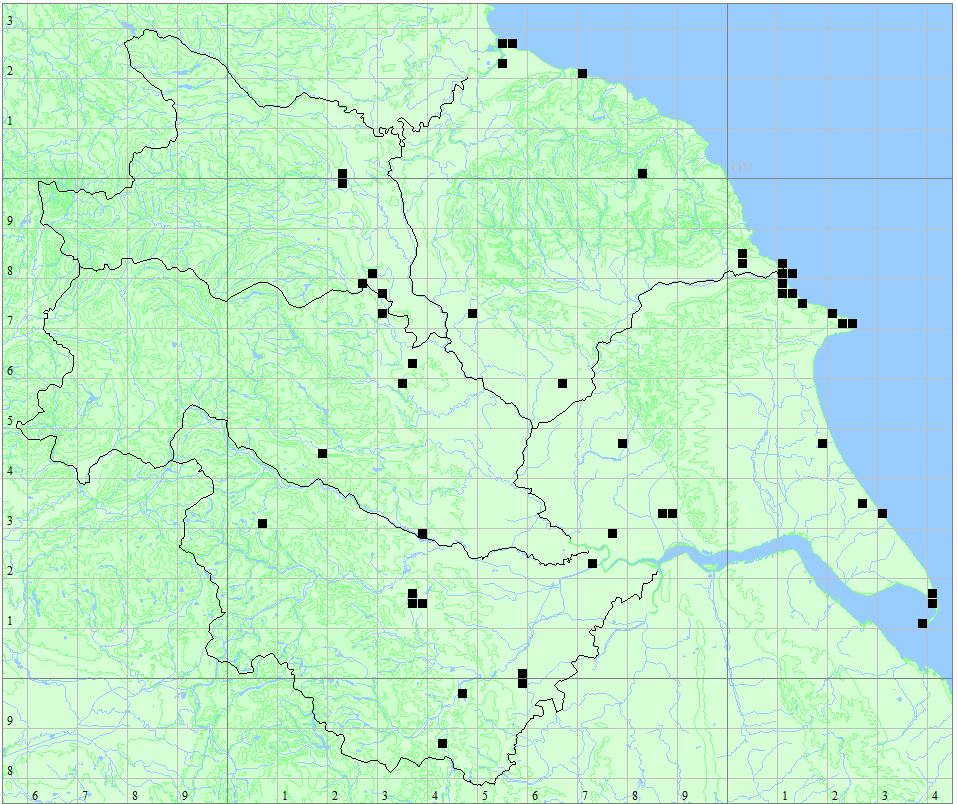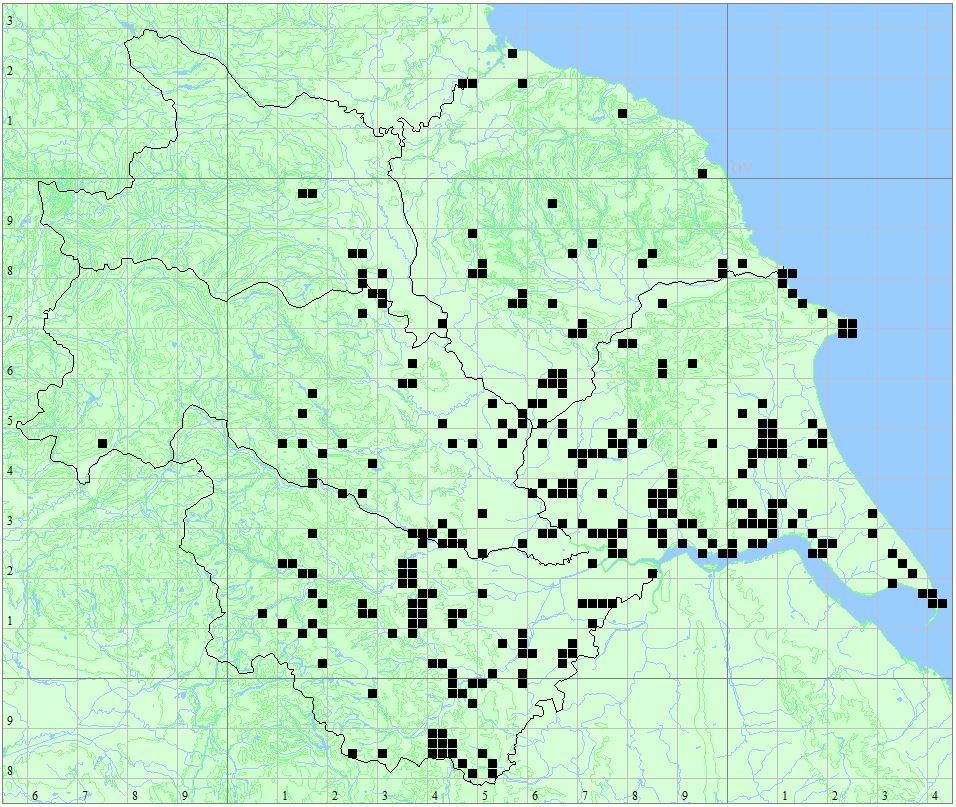Category: Nosterfield
Golden-ringed Dragonfly Cordulegaster boltonii
<-Previous Species – Next Species->
Male
Length 74mm, wings 100mm.
Predominantley black species, with yellow thoracic stripes and antehumeral stripes on the thorax, with yellow rings around the abdomen, slightly swollen towards the tip. Green eyes. Female Southern Hawkers sometimes confused with this species.
Female
Length 84mm, wings 100mm.
Predominantley black species, with yellow thoracic stripes and antehumeral stripes on the thorax, with yellow rings around the parallel sided abdomen, ovipositor extending beyond segment 10. Green eyes. Female Southern Hawkers sometimes confused with this species.
Both
Black with yellow markings, as rings on abdomen; eyes greenish; legs black; female has sharp ovipositor; wings clear with leading edges (costa) yellow.
Habitat
Streams and rivers with silt, gravel or stone base in upland areas or lowland heath.
Behavior
Eggs laid in bed of stream, etc. Larvae 2-5 years.
Flight Period
Distribution Map
Locations
Four-spotted Chaser Libellula quadrimaculata
<-Previous Species – Next Species->
Length
43mm, Wings 76mm
Males
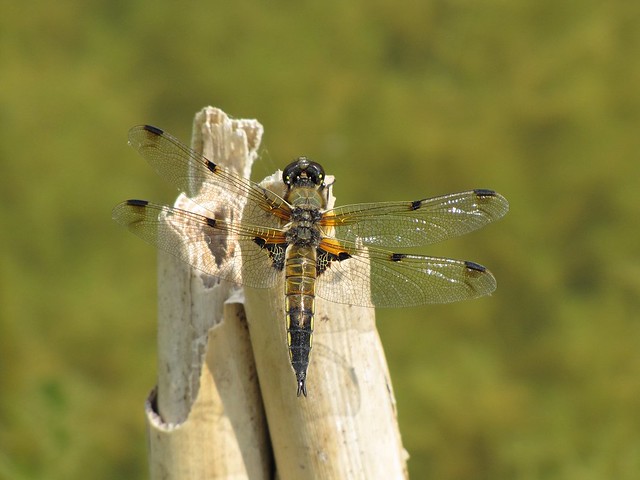
Thorax brown, no antehumeral stripes; abdomen brown, last 4 segments darker than the rest, yellow spots on sides; wings dark patches at nodes on leading edges and at bases of rear wings.
Females
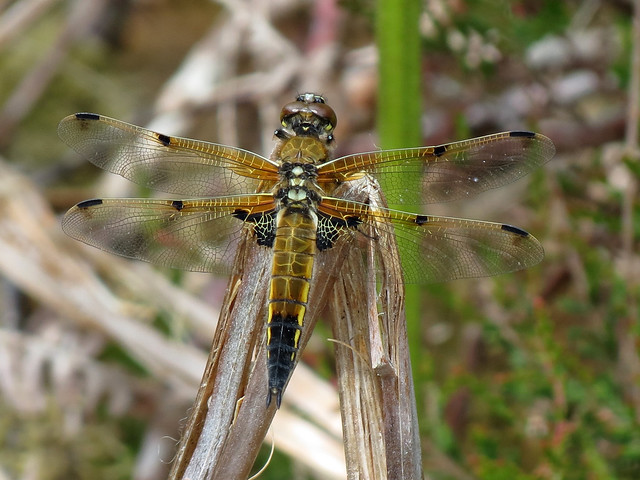
Similar to males, main difference is the shape of the anal appendages.
Habitat
Prefers sites of still water consisting of lakes, ponds, bog pools, canals and dykes. Will tolerate brackish conditions. The largest concentrations are associated with acidic ponds and pools.
Behavior
Males are territorial, their noisy clashes are obvious where densities are high. Readily returns to the same perch on emergent vegetation, after sparring with other males, or after short patrols along the waters edge. Copulation is short taking place in flight, only lasting for 5-20 seconds. Female oviposits by flicking the abdomen tip downwards into the water. The eggs then sink and adhere to submerged vegetation. Males may stay close by to guard females during oviposition. Larvae live among the bottom debris, then emerge after two to four years. Emergence takes place amongst marginal vegetation during daylight hours.
Flight Period
Distribution Map
Locations
- Rodley Nature Reserve
- Moorgates Quarry LNR
- Thorne Moors – Humberhead Peatlands NNR
- Thorpe Marsh
- Oakhill & Goole Brick Ponds
- Paull Holme Strays
- Treeton Dyke
- Rabbit Ings
- Forge Valley NNR
- Walton Colliery Nature Park
- Pugneys Country Park
- The Yorkshire Arboretum
- Nosterfield Local Nature Reserve
- Timble Ings
- Fairburn Ings
- Potteric Carr
- Fen Bog
- Spurn Point
- Skipwith Common
- Saltmarshe Delph
- Pulfin and High Eske Nature Reserve
- Pocklington Canal
- Oak Road Lake, Hull
- North Cave Wetlands
- Leven Canal
- Filey Dams
- Eastrington Ponds
- Broomfleet Washlands
- Noddle Hill Nature Reserve
- Allerthorpe Common
- Tophill Low Nature Reserve
Black-tailed Skimmer Orthetrum cancellatum
<-Previous Species – Next Species->
Length
50mm, Wings 78mm
Males
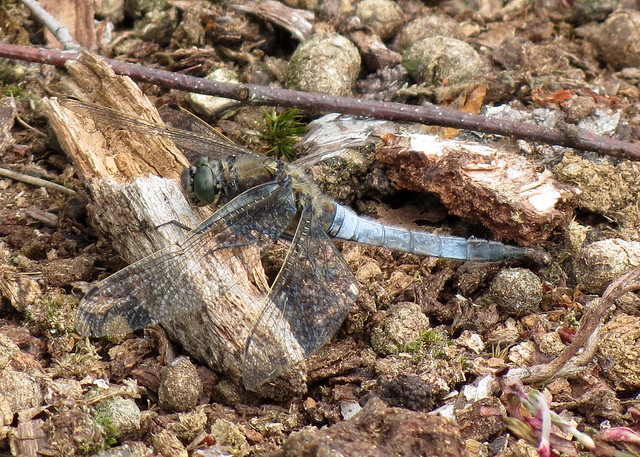
Thorax black, no antehumeral stripes; Abdomen top is blue with yellow spots towards sides, black tip; legs black.
Females
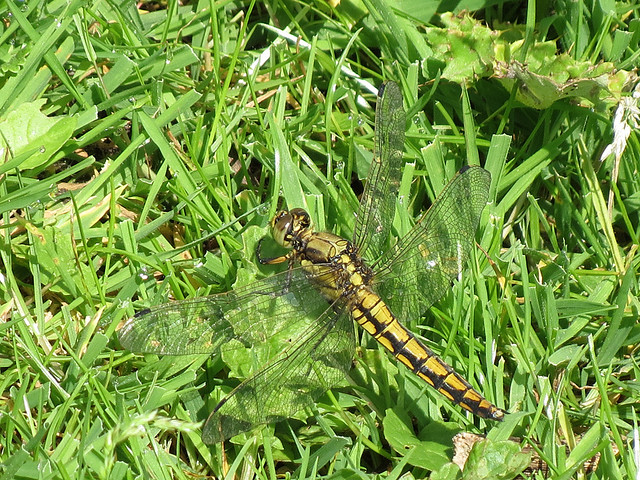
All yellow with 2 black bands on upper surface abdomen.
Habitat
Prefers lakes, ponds, gravel workings, slow rivers or marshes, with exposed mud, stones or bare patches where the male can perch.
Behavior
Highly territorial, males perch on bare areas of ground, typically on slightly raised areas such as stones, logs or bare soil, on the lookout for females and rival males. When patrolling over water they fly low, skimming over the surface. Copulation can take place in flight, where it will only last for a few seconds, though sometimes this can take place in vegetation where it may last up to 15 minutes. Oviposition occurs by dipping the abdomen into water, with the male often remaining nearby. Larvae live amongst the bottom silts, emerging after two to three years. Emergence usually takes place on vegetation, often several metres away from water.
Flight Period
Distribution Map
Locations
- Rodley Nature Reserve
- Moorgates Quarry LNR
- Thorne Moors – Humberhead Peatlands NNR
- Thorpe Marsh
- Oakhill & Goole Brick Ponds
- Paull Holme Strays
- Treeton Dyke
- Rabbit Ings
- Walton Colliery Nature Park
- Pugneys Country Park
- Nosterfield Local Nature Reserve
- Fairburn Ings
- Johnny Brown’s Common
- Potteric Carr
- Spurn Point
- Skipwith Common
- Saltmarshe Delph
- Pulfin and High Eske Nature Reserve
- Oak Road Lake, Hull
- North Cave Wetlands
- Hornsea Mere
- Filey Dams
- Eastrington Ponds
- Broomfleet Washlands
- Noddle Hill Nature Reserve
- Tophill Low Nature Reserve
Common Darter Sympetrum striolatum
<-Previous Species – Next Species->
Length
37mm, Wings 57mm.
Males
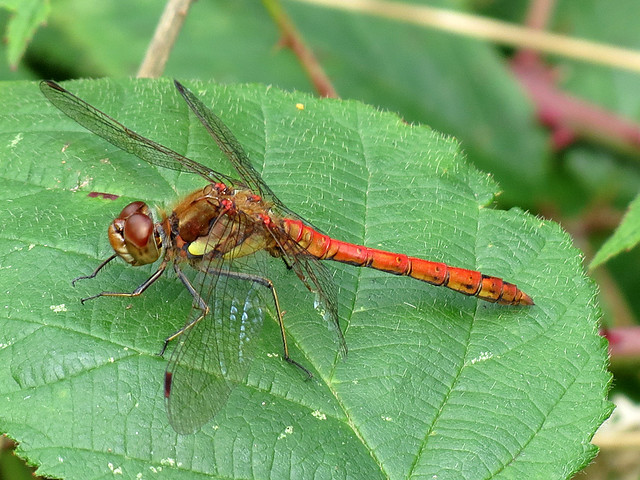
Thorax brown with yellow patches on sides; abdomen orange/red with black central line last 2 segments ; legs black/yellow; eyes brownish; black line on top of the frons only.
Females
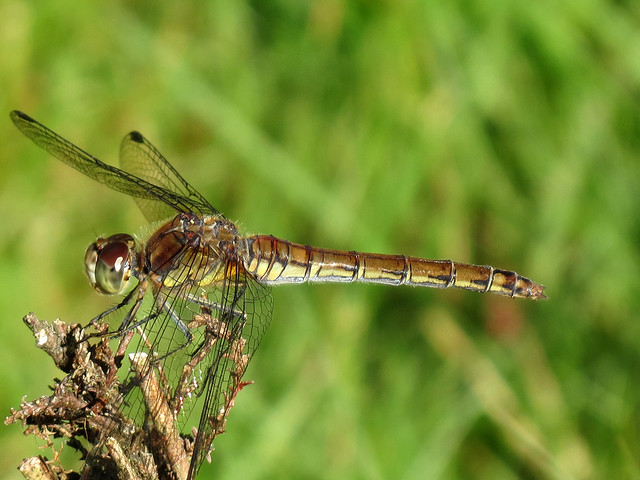
Thorax pale brown with yellow side panels; abdomen yellow with black central line segments 9-10 and along sides. Old females tend to take on male colours.
Habitat
Preferences are quite catholic, including ponds, lakes, canals, ditches and slow-flowing rivers. It is tolerant of brackish conditions and peaty bog pools. Can be found away from breeding sites feeding in sheltered locations, like woodland rides and hedgerows.
Behavior
Males are territorial, spending a lot of time perched, only making short flights when disturbed or chasing off intruders. Basks on the ground, especially late in the season when temperatures are lower. Frequently found away from water in sheltered areas, especially females wanting to avoid attention from males. Copulation takes place at rest, lasting around 10-15 minutes. Oviposition regularly takes place in tandem, where the eggs are flicked into the water by dipping the abdomen onto the surface. Females will also oviposit alone. Larvae emerge after one year, this taking place during the morning, onto bare bank sides or emergent vegetation.
Flight Period
Distribution Map
Locations
- Rodley Nature Reserve
- Moorgates Quarry LNR
- Thorne Moors – Humberhead Peatlands NNR
- Thorpe Marsh
- Oakhill & Goole Brick Ponds
- Paull Holme Strays
- Treeton Dyke
- Rabbit Ings
- Walton Colliery Nature Park
- Pugneys Country Park
- The Yorkshire Arboretum
- Nosterfield Local Nature Reserve
- Timble Ings
- Fairburn Ings
- Johnny Brown’s Common
- Potteric Carr
- Dundale Pond
- Tranmire Bog
- Fen Bog
- Spurn Point
- Skipwith Common
- Saltmarshe Delph
- Pulfin and High Eske Nature Reserve
- Pocklington Canal
- Oak Road Lake, Hull
- North Cave Wetlands
- Leven Canal
- Hornsea Mere
- Filey Dams
- Eastrington Ponds
- Broomfleet Washlands
- Noddle Hill Nature Reserve
- Allerthorpe Common
- Tophill Low Nature Reserve
Red-veined Darter Sympetrum fonscolombii
<-Previous Species – Next Species->
Length
40mm, Wings 63mm
Male
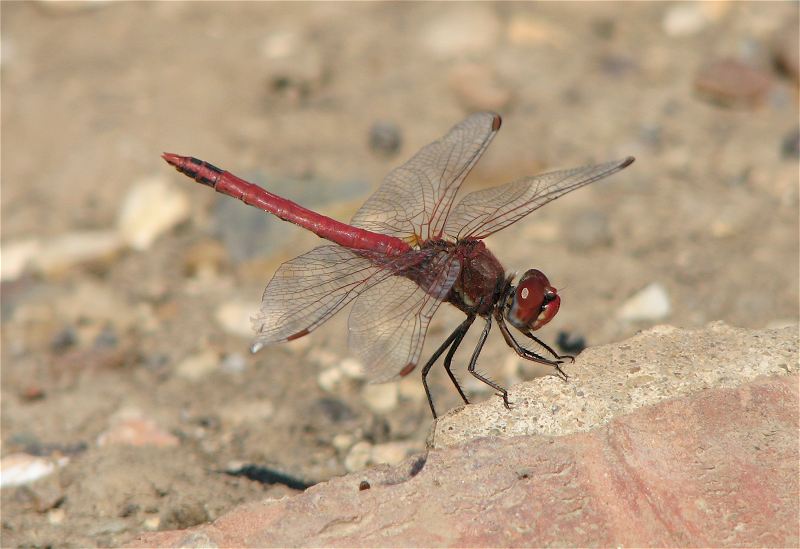
Brick red colour with central black line on segments 8 and 9; basal veins of wings near leading edges are red with a yellow patch at the base of the hind wing; underside of eyes are blue.
Females
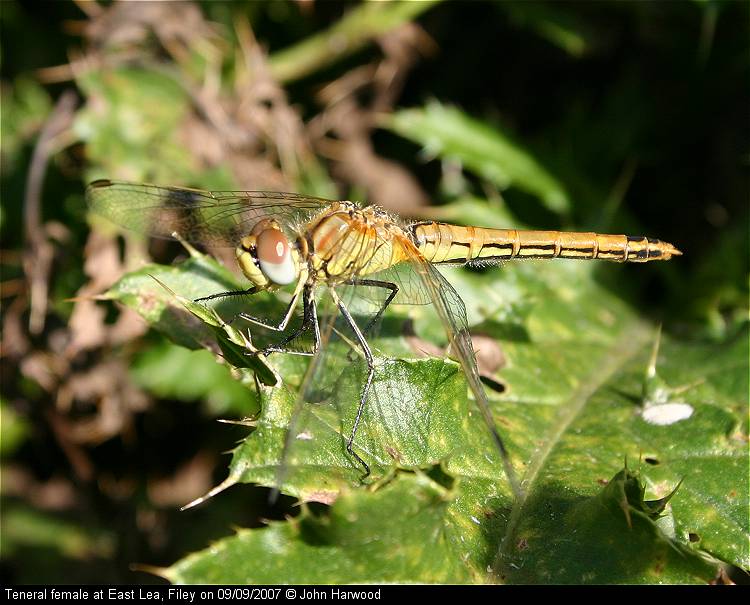
Body yellow with central black line on segments 8 and 9; yellow patch at base of hind wings and veins at front edge of wings also yellow; underside of eyes blue.
Habitat
Vagrant from Europe, although it has colonized some areas of Great Britain. In the East Riding the best site is the scrape in Clubley’s field at Spurn Point. Shallow ponds, pools and ditches.
Behavoiur
Males are territorial, perching on the ground or adjacent vegetation, only flying off to intercept intruders. Frequently hovers over open water. The pair usually oviposit in tandem in areas of shallow water. The warmer water in shallow conditions helps the larvae develop quickly, sometimes resulting in a second generation emerging in the same year. They are strongly migratory, with strong influxes in some years, then none in others. These irregular influxes make it difficult to assess if this species is breeding on a regular basis.
Flight Period
Distribution Map
Locations
Ruddy Darter Sympetrum sanguineum
<-Previous Species – Next Species->
Length
34mm, Wings 55mm.
Males
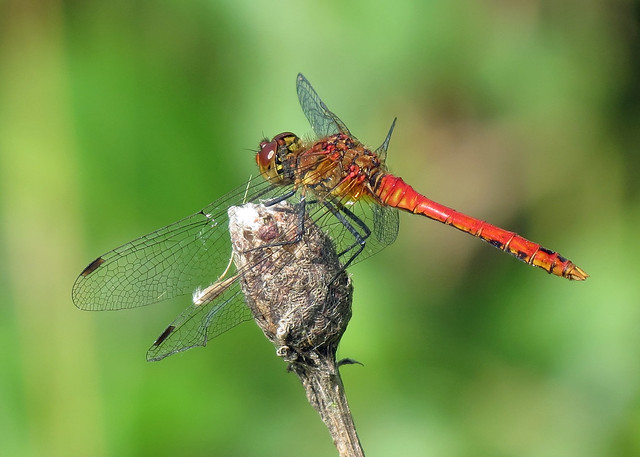
Thorax brown with 2 thin black lines on sides; abdomen narrow waist, rich red colour; face red; legs all black; line over frons spreads down the sides.
Females
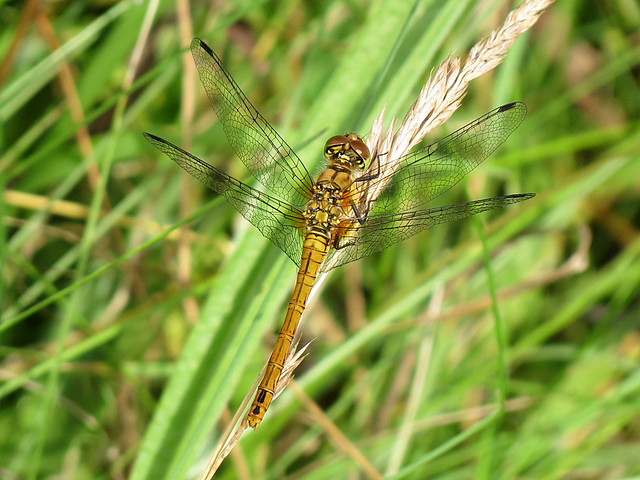
Yellowish throughout with black markings on sides of thorax and abdomen; legs all black.
Habitat
Marshes, ponds, lakes, canals and ditches, with plenty of tall emergent vegetation. Will tolerate brackish conditions, using woodland near to water bodies for shelter.
Behavior
Males are less aggressively territorial than Common Darter Sympetrum striolatum. They have a ‘skippy’ flight, being less direct than the latter species. Copulation lasts only a few minutes whilst perched on vegetation or the ground. The female will then oviposit either alone, or in tandem, amongst shaded vegetation. Larvae live among submerged plants and emerge after one year.
Flight Period
Distribution Map
Locations
- Rodley Nature Reserve
- Thorne Moors – Humberhead Peatlands NNR
- Thorpe Marsh
- Oakhill & Goole Brick Ponds
- Paull Holme Strays
- Treeton Dyke
- Rabbit Ings
- Walton Colliery Nature Park
- Pugneys Country Park
- The Yorkshire Arboretum
- Nosterfield Local Nature Reserve
- Johnny Brown’s Common
- Potteric Carr
- Spurn Point
- Skipwith Common
- Saltmarshe Delph
- Pulfin and High Eske Nature Reserve
- Pocklington Canal
- Oak Road Lake, Hull
- North Cave Wetlands
- Leven Canal
- Hornsea Mere
- Filey Dams
- Eastrington Ponds
- Broomfleet Washlands
- Noddle Hill Nature Reserve
- Allerthorpe Common
- Tophill Low Nature Reserve
